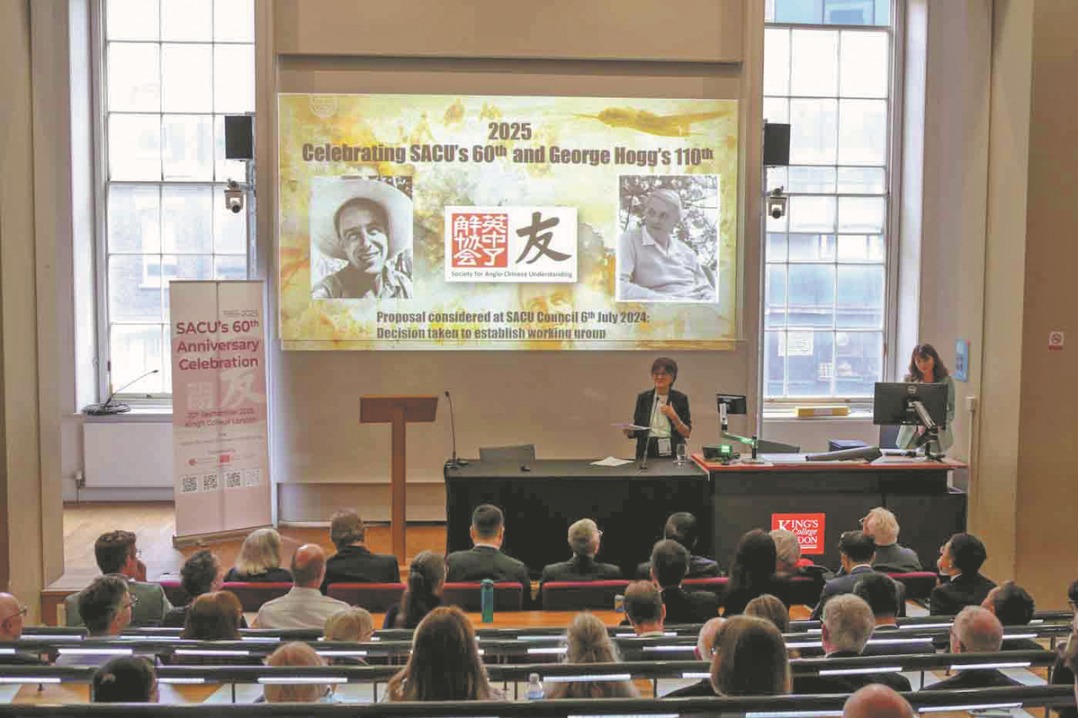Why Africa can't directly copy China's experience

Editor's note: This article is part of the Preview Policy Report for the 2018 Beijing Summit of the Forum on China-Africa Cooperation, to be published by China Watch, China Daily's think tank.
Major differences between Beijing's opening-up and the circumstances that most African countries find themselves in now require African countries to adapt China's model
By Zahra Baitie
Africa is seeking to industrialize. From Addis Ababa to Dakar, Cape Town to Cairo, the impetus to manufacture is now a priority for much of the continent. As the President of the African Development Bank Akinwumi Adesina put it: "the secret of the wealth of nations is clear: developed countries add value to everything they produce, while poor nations export raw materials. Africa must quit being at the bottom of the global value chains."
This belief in the power of industrialization to drive development is now a mainstay of development agendas by African leaders who are faced with increasingly youthful and often jobless populations and higher accountability to their citizenry. It is also fueled by China's economic shift. Rising labor costs in China, an aging population and political imperatives have led economists to argue that there is an impending relocation of millions of manufacturing jobs from China to developing countries. African countries are thus positioning themselves as receptacles of these manufacturing jobs, and are returning to Special Economic Zones and Industrial Parks as one way to both achieve industrialization and attract Chinese investment. And they are increasingly asking us – Development Reimagined,and our partners such as China Africa Advisoryand Made in Africa Initiative, for advice on what to do.
In the late 1970s and early 1980s, the Chinese government announced an "opening-up strategy" and set up pilot SEZs. For China, a relatively poor country at the time, with limited financial resources, the clustering of industries together in the same location supporting industries (technical services, repair and maintenance, administrative and legal services, logistical services, packaging, etc.) was crucial and necessary, as it created economies of scale and efficiency. The SEZ acted as a concentrated platform/area for FDI and created jobs. But it was not sufficient. China's "soft infrastructure" – the government's role – was also crucial to this process. The Chinese view was that an enabling government was as important an element of success as the existence of the SEZ itself.
At the same time, the central government gave local governments considerable autonomy. They had freedom to use the tax revenues collected from the FDI to shape the legal, management and economic reality that businesses met in the new zones, and gradually learned what works and what didn't. For instance, they all slowly moved to create "one-stop-shops" where new businesses could do all their paperwork – from registering land to paying taxes.
Furthermore, the SEZs were opened with the explicit goal of "comprehensiveness". There was, essentially, no prioritization at first. The government initially allowed (and local governments sought) investment in all sorts of activity and sectors. However, over time this changed. By 1994, the Chinese government offered no more incentive packages to foreign investors who were involved in pure processing or assembly operations – they wanted to shift emphasis toward actual manufacturing.
Africa cannot just transplant China's SEZ model
So, can African countries also succeed by copying this model? In our view, directly copying is neither possible nor advisable. In particular, there are two major differences to note between China's opening-up strategy, and the set of circumstances that most African countries find themselves in now.
First, before industrialization, China did not have a poor trade balance. The government, while industrializing, took steps to protect the Chinese domestic market for domestic manufacturers, thereby carefully managing imports for non-productive consumption. Most African countries do not have the opportunity to do this – their domestic markets are already highly liberalized, and many have trade deficits with China itself.
Second, while industrializing, China had very relaxed rules around intellectual property protection (where they existed), which allowed Chinese businesses to experiment and innovate within the SEZs, including learning from foreign techniques. This allowed and incentivized companies to move up and down the value chain to more technologically sophisticated production, developing technological and management competences to maximize quality (and minimize or mitigate environmental impact).
Nevertheless, many African countries are using and – we believe – should use SEZs to industrialize. But they must study China's model and adapt it carefully to their own circumstances.
How to adapt China's SEZ model for African circumstances?
Here are six of the most important recommendations we usually make when supporting African government clients to design their industrialization strategies and SEZs/IPs.
- Anenabling environmentis not just about low tax.China's experience clearly demonstrates other aspects such as basic infrastructure and utility costs in the zone really make a difference, as do one-stop-shops. To get the best results, governments should develop feedback mechanisms with investors and industrial actors to ensure SEZs meet the real, economic needs of the investors.
- Don't target specific sectors too much.As demonstrated by China's success with clustering, having various industries that can support one another is an important factor in enabling the success of SEZs.
- Find and promote a success story.The presence of one Chinese firm in a sector is very useful in helping to trigger investment by other Chinese manufacturers. African countries should find anchor investors for proposed parks and develop case studies of these Chinese factories to highlight the attractiveness and feasibility of Chinese investment in their countries.
- Embrace competition.African countries should let market forces determine the viability of SEZs. If that means the SEZ in a neighboring country has a better business case,so be it.Speak to the neighboring government and explore partnering or investing in that SEZ as well.
- Develop a multi-market export approach.As Rwanda discovered when the US canceled its zero-tariff status in retaliation to Rwanda's ban on second-hand imports, reliance on any one market is precarious. China became its own factory and thefactory of the world – bolstering recent moves to create a continent-wide Free Trade Area (which will be the largest in the world once ratified), Africa should adopt a similarly broad focus.
- Go green.African countries seeking to learn from China's model would be remiss not to take environmental lessons from China's experience. Africa should avoid the long-term costs of environmentally-destructive industrialization and build in green policies into their industrialization approach.
Zahra Baitie is China director of Development Reimagined. The author contributed this article to China Watch exclusively. The views expressed do not necessarily reflect those of China Watch.
All rights reserved. Copying or sharing of any content for other than personal use is prohibited without prior written permission.
































